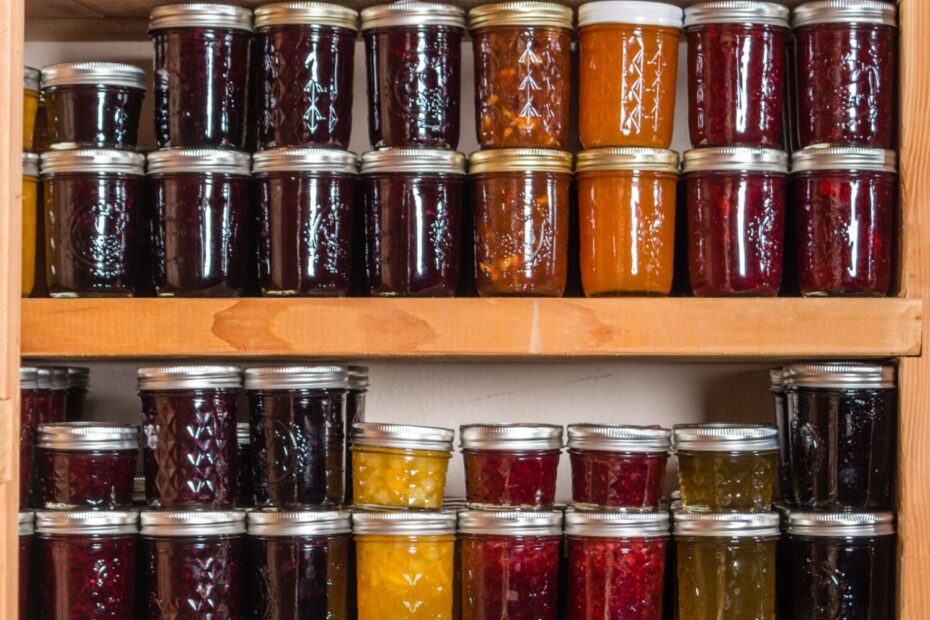[ad_1]
Some of the links in this post may contain affiliate links for your convenience. As an Amazon associate I earn from qualifying purchases.
Investing time, money, and effort into building a well-stocked food storage pantry is a crucial aspect of preparedness for all families. However, ensuring that your investment remains intact requires vigilance against various threats. Here are six enemies that could potentially damage your food storage, along with practical tips to safeguard it.

Stocking up on food gets expensive, and every frugal bone in my body shudders at the thought of anything going to waste, so I try to store everything in the best possible conditions. Depending on your storage conditions all, some, or none of these can impact the quality and longevity of stored food: Heat, humidity, oxygen, pests, light, and even the unintentional actions of children.
6 Enemies of Food Storage
1. Heat: Preserving Nutritional Value
Maintaining a consistently cool storage environment, ideally between 40 and 72 degrees, is essential for maximizing the shelf life of stored food. For every 18 degrees above 72, food will lose its nutritional value by half, and over time, it will lose much of its original flavor, texture, and appearance. Explore ways to keep your food storage space cool.


2. Humidity: Keeping Things Dry
Excess moisture can compromise the quality of stored food. Use air conditioners or dehumidifiers to control humidity levels, and ensure that food is packaged with minimal moisture with as little moisture as possible. Store food off the floor and away from external walls where moisture might seep in.
3. Oxygen: Battling Oxidation
Over time, oxygen changes the appearance, flavor, and texture of food. For example, when fats oxidize they become rancid. Combat oxidation by using oxygen absorbers, regularly rotating food items, and paying attention to the other five factors that negatively affect the longevity of food storage. Eliminating oxygen not only preserves food quality but also helps prevent bacterial growth—consider vacuum-packing for added protection.
4. Pests: Averting Infestations
Preventing pest and rodent infestations is critical to protecting your food storage and other preparedness items. Many dry foods can be frozen for at least four days to ensure that microscopic insect eggs will never hatch. Keep food in air-tight containers, and also keep all food storage areas, including shelves and floor clean of food particles. For an all-natural pest control method, try diatomaceous earth.
5. Light: Diminishing Flavor & Appearance
Keep your pantry area as dark as possible. Light can and will affect the flavor and appearance of food, but it’s also the easiest enemy to keep at bay. Prioritize longevity over aesthetics even for food stored in clear containers; keep them in labeled boxes with lids to shield them from light exposure. Granted, it won’t be as attractive as all those pretty jars filled with homemade preserves and canned veggies, but they’ll last longer.
6. Kids: Redirecting Hungry Snackers
Children may deplete your food storage before you realizing it’s happening. So far, I’ve lost entire boxes of granola bars, energy bars, and two or three cases of Capri-Suns. To redirect hungry kids, consider organizing kid-friendly snack zones within easy reach, filled with acceptable-to-you alternatives.
Also, encouraging open communication about the importance of preserving stored food and involving them in meal planning can instill a sense of responsibility and minimize the chances of “mysterious disappearances.”
Expert Tip
Make it a habit to check your food storage regularly; put a reminder in your phone to help you remember. By doing this, you catch problems early and keep your supplies in good shape for the long haul.
FAQ
Use a thermometer to check temperatures in different rooms of your house. Experiment with relocating your food to cooler spots and consider using room-darkening blinds on windows.
Consider grouping food items, like canned goods, by expiration date to facilitate easy rotation. This simple practice ensures freshness and minimizes the risk of wasting food.
Want More Help?
Do you need help building your emergency food storage? I created a FREE ebook to help you build a balanced pantry. In it I share simple tips and explanations to help you create an emergency food supply that will provide nutritious and simple meals in an emergency. Get that free build a balanced pantry ebook here.
Final Thoughts
Food storage is an investment and should be treated as one. Taking the extra steps to keep it safe from these six enemies of food storage is well worth your time.
[ad_2]
Source link



